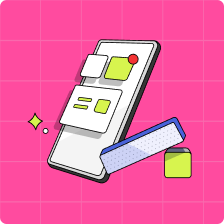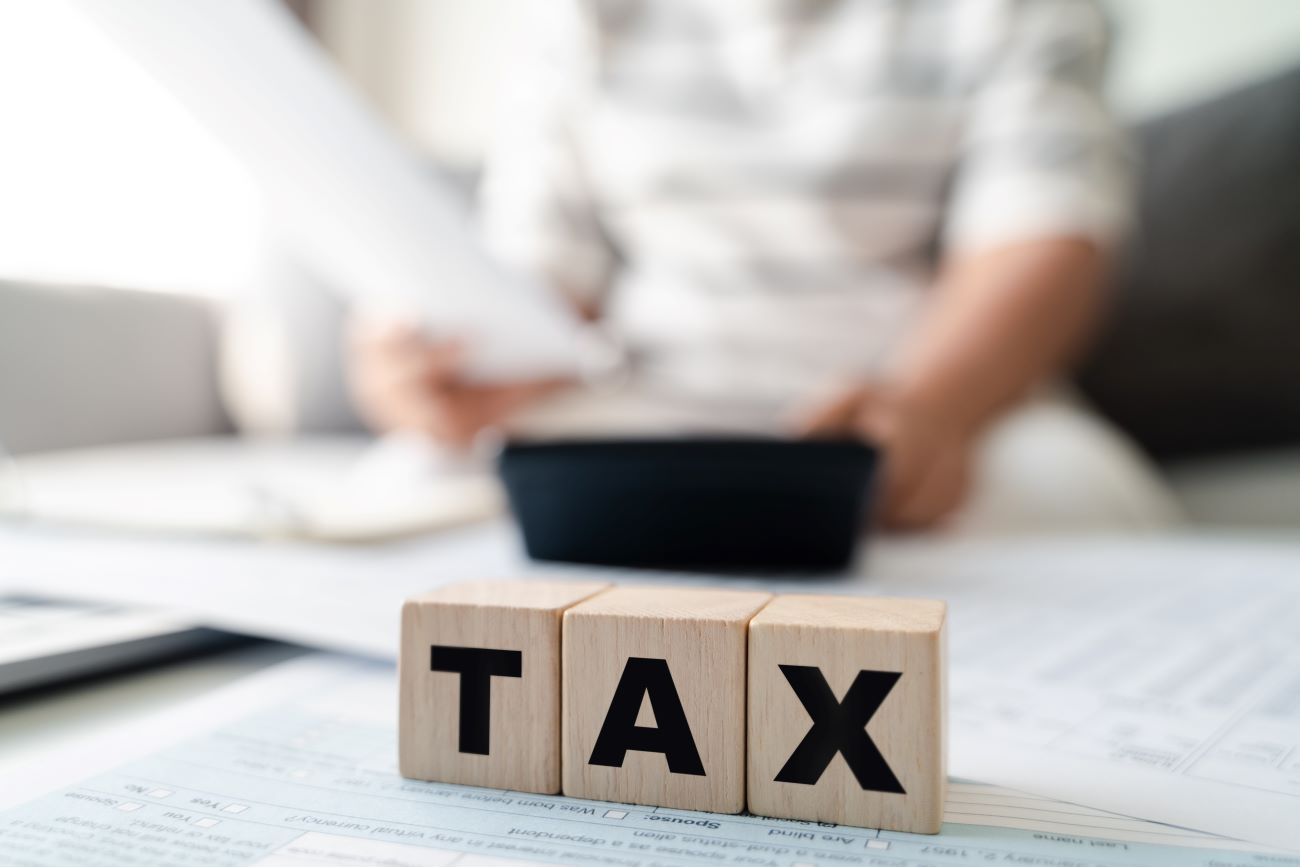Taxes can be, well, taxing, even for the most prepared. That’s because tax documents are loaded with complicated jargon that make filing a return feel like a maze. However, not everyone feels this way—your kids might be surprised to learn that some people even make a career out of doing other people’s taxes, largely because they understand the language.
By familiarizing teens with a few key tax terms, filing income taxes should feel less daunting and easier for them to do year after year. Even if you’re not an accounting whiz, or if you hand your taxes over to someone else, helping kids understand the basics of taxes is all part of financial literacy. Here, we break down the essential terms kids and teens should know about income taxes.
Key takeaways
- Income taxes are collected by the government and put toward different social programs and government departments.
- How much you pay in income taxes depends on how much you make, if you’ve got dependants, and whether you can reduce what you owe through deductions or tax credits.
- Payroll deductions might feel like a pinch, but they save you from a giant tax bill the following year.
- Four different tax brackets exist in Canada that help distribute wealth more evenly among everyone.
What is the meaning of income tax?
Income tax is a portion of the money you’ve earned in one year that is handed over to the government. If you receive a paycheque from a job, earn profits from investments, or have any other type of legal income (e.g., rental income, employment insurance, etc.), then you’ll pay the government a share of your income in the form of tax.
Nobody gets excited about handing over a chunk of their hard-earned income, but taxes are an important piece of a functioning democracy. They help fund federal and provincial programs that benefit both you and your community: public health care, COVID-19 (Coronavirus) economic recovery, and various government-run departments—like your local driver’s licence office. If you love going to the library or hiking a nearby trail, know that some of your money has gone toward maintaining these important community spaces.
Learn more about how income taxes work in Canada.
23 basic income tax terms and definitions
If tax-related words and their definitions feel like a completely different language, you’re definitely not alone. Here we break down basic tax terms into everyday language to help you get more familiar with their meaning:
Audit
An audit happens when the Canada Revenue Agency (CRA) runs your tax return through risk assessment, starts doing the Thinking Face emoji (this one: 🤔), and contacts you for more details. An audit could happen if they find errors, such as missed income, or what looks like unusually large expenses on your tax return. (Instead of a full tax audit, you may just receive a phone call or a review letter, asking for more documentation on a particular tax deduction, e.g., childcare costs or extensive dental work.) If you’ve been saving all your receipts and income documents, an audit should be nothing to worry about.
After an auditor examines your records, they will either find that your tax return is correct, which means nothing more needs to be done, or that it must be reassessed. In the latter case, you’ll need to resubmit your taxes and will either owe the government more money, or be entitled to a refund. You also have the right to appeal any reassessment within 30 days.
Benefits
Benefits are regular payments from the government that helps taxpayers with various costs of living. For example, the Canada Child Benefit (CBB) is a non-taxable monthly benefit for eligible parents of kids under the age of 18 still living at home. Provinces and territories also have their own benefits. The Ontario Trillium Benefit, for instance, helps low- to moderate-income residents offset energy costs and property tax dues. Benefits differ from credits in that a benefit is paid directly to the individual, rather than applied to your taxes to reduce your overall tax bill.
Canada Revenue Agency (CRA)
This is the government agency that collects and processes taxes across the country. When you file your income taxes, you do so directly with the CRA. They’re kind of like Santa Claus, but instead of handing out toys, the CRA doles out tax credits and benefits to taxpayers. Instead of dropping coal in your stocking, the CRA will ding you with interest penalties if you don’t pay your taxes on time. And just like Saint Nick, they’ll be watching. Which is why it’s important to report income from a side hustle, cash tips made at a restaurant, or any additional savings toward your tax-free savings account (TFSA) beyond the allowable contribution room.
Capital gain and capital loss
These are any financial wins or losses from your investments. For example, if you buy a stock and the value of that stock rises, that’s a capital gain. If you decide to sell that stock and make more money than what you bought it for, that’s known as a realized capital gain—and 50 per cent of those earnings would be taxed as income. Capital loss is the reverse scenario: If that stock depreciates in value, and you sell it for less than what you bought it for, that counts as capital loss, and the difference would go toward lowering your overall tax bill.
Read more our guide to the stock market for kids and teens.
Credits
Tax credits help lower how much you owe at tax time. So, if you owe the government $500 in taxes, but qualify for a $100 tax credit, then your overall tax bill would be $400. There are two types of tax credits:
Non-refundable tax credits
These are called “non-refundable” because they won’t help you get a refund. Instead, these credits help ease some of life’s heavy costs at tax time. For example, tuition fees, interest paid on student loans, or CRA-approved medical expenses can all help lower your tax bill. Donations to registered charities also count as non-refundable tax credits. If your qualifying tax credits add up to more than what you actually owe, however, don’t expect a cheque in the mail. Your tax bill will simply be zero.
Refundable tax credits
These credits help lower your overall tax bill, and any extra is refunded back to you. Refundable tax credits include the new Ontario Staycation Tax Credit, which allows Ontario residents to claim 20 per cent of hotel or other vacation rental expenses within the province, or the British Columbia training tax credit for apprentices enrolled in an approved trade, for example. Refundable tax credits also apply if you overpay Employment Insurance (EI) or Canada Pension Plan (CPP) contributions. If you qualify for more refundable tax credits than you owe in taxes, the difference is refunded back to you.
Deductions
Unlike tax credits, which are subtracted from your taxes owing, deductions are subtracted from your total income. By lowering your income, you’ll owe less in taxes. Deductions available to individuals include registered retirement savings plan (RRSP) contributions, moving expenses, childcare expenses, union dues, or costs a person with disabilities has in order to work or attend school.
Read more about our guide to tax deductions for kids.
Dependant
This is a person who relies on someone else for financial support. If you’re living at home, going to school, and financially dependent on your parents, guardian, or another person, you’re likely listed as their dependant on their income taxes.

Earned income
This is income that you earn, whether from babysitting your neighbour’s kid, money you made from a summer job, or regular paycheques from a full-time job. While all income made from providing a service or selling a product is considered earned income, it’s only taxable once you make more than a certain amount (known as the Basic Personal Amount). In 2022, this number is $14,398 for the year.
Gross income
This is your total income listed on a pay stub before any deductions are made. Gross income could also include other sources of income, such as commission (if you’re in sales, for example). If your employer offers an end-of-year bonus, then it would be included as gross income.
Net income
Net income is an important number to understand. Think of a fishing net—“net income” is the money you bring home after deductions have swam away. Sometimes also called your “take-home pay,” net income is the amount of money that is deposited into your bank account or on your paycheque. Net income is used by the CRA to determine tax credits and any benefits you might be entitled to on your tax return.
Notice of assessment (NOA)
This is a document the CRA sends you either electronically or by mail after evaluating your tax return. The NOA gives you a detailed summary of your income taxes, including a breakdown of how much tax money you may owe or may be refunded, plus how much you should receive from any eligible benefits or credits.
Payroll deductions
For employees, payroll deductions are sums of money taken off your paycheque for income taxes, EI, CPP, and any group benefits plans, if applicable. While it’s a bummer to see how much money has been taken from your wages every payday, having your employer do this work saves you from doing the messy math come tax season. Payroll deductions include (but are not limited to):
Employment Insurance (EI)
This is a government program that provides temporary income to people who have been laid off, or are otherwise involuntarily out of work. If you find yourself in this position, you may be eligible to receive EI to help tide you over until your next job.
Canada Pension Plan (CPP)
If you’re 18 or over, and earning more than $3,500 a year, a chunk of your pay gets set aside for CPP, which will be returned to you once you hit the age of retirement. While retirement seems like a long way off, Future Retirement You is going to be really grateful that Young Working You contributed money to this federal pension plan. (Quebec residents have their own similar program called the Québec Pension Plan, or QPP.)
Federal and provincial income tax
These taxes are deducted from each paycheque, so that you don’t have to pay a lump sum at tax time. What you owe throughout the year is assessed by your employer based on your tax bracket, but this estimate is not always accurate. If your employer overpays the CRA on your income tax, the balance is refunded to you after you file your taxes. But the reverse is also true: If your employer doesn’t take enough off your paycheques, you could face an unexpectedly large tax bill.
Pay stub
A pay stub is a piece of paper outlining the details of your income and any deductions. It was once attached to a paper cheque and easily removed for filing (i.e., a “stub”). But with direct deposit, pay stubs are increasingly mailed separately, or sent electronically. Pay stubs include the pay period for which you’re being paid, gross income, any payroll deductions (e.g., income tax, EI, and CPP), and your take-home pay.
T4 slip
Also called a Statement of Remuneration Paid, a T4 slip is a document supplied by your employer around tax time that summarizes your employment income, including salary, tips, bonuses, and vacation pay. It also records deductions, fees, and group benefits (e.g., health and dental coverage) paid. The T4 slip outlines all this information in a series of numbered boxes, which help guide you through the process of filing your taxes.

Tax brackets
In Canada, the more money you make, the more you get taxed. That’s a good thing, because then the highest earners can spread their wealth to the rest of the country, while the lowest earners have a bit of financial breathing room. The government has created four different tax rates (or brackets) for individuals or families based on their earned income. Those at the lowest tax bracket ($49,020 or less for the 2021 tax year) are taxed at 15 per cent of their income, while people earning more than $216,511 are taxed at 33 per cent for income above that figure.
This doesn’t mean that the highest earners pay back one-third of their total income in taxes—they’re taxed on several different tax brackets: The first $49,020 earned is taxed at 15 per cent, the second $49,020 earned is taxed at 20.5 per cent, and the rest of the balance continues being taxed at each remaining bracket as it applies (the remainder is known as the marginal tax rate).
Tax refund
A tax refund is money that comes back to you if you’ve overpaid on your taxes. Tax refunds feel like a perk for filing your taxes—a cheque from the government with no strings attached! But before you get too excited, don’t forget that it’s not actually free money. It’s just income that was temporarily withheld from you—and the government is doing you the courtesy of not keeping it. But whether you want to tuck a refund into your emergency savings account, or make it rain on a pile of graphic novels, is up to you (we’re sure most parents would recommend the former!).
Tax return
This document declares your income, expenses, deductions, and credits. After all these numbers are tallied up, your tax return helps you determine how much is owed in taxes. When people talk about “filing taxes,” this document is what they’re referring to. While it looks like an intimidating sheet of boxes and accounting terms, it’s worth noting that few people hand-calculate and file on paper anymore. Instead, they rely on either a certified accountant or one of the many digital tax platforms out there that does all the mathematical legwork.
Read our guide to filing your first tax return as a teen.
TD1
This is a form that employees submit to their employer to help them calculate how much income tax should be deducted from their wages each payday. TD1 forms include salary information and any estimated tax credits you may be eligible for, like tuition fees.
Why your kids should understand common tax terms
When kids understand taxes, they won’t be as shocked at seeing how much net income is left on their first paycheque after payroll deductions. And while not every teen will need to file taxes on their own, understanding how they work and what all the terms mean will help keep more income in their own pockets, especially later in life.
With the Mydoh app, younger kids can learn how to earn income through tasks and allowances with a big payday every week (without the tax). This is a good opportunity to introduce the concept of taxes and payroll deductions—and aren’t they lucky you aren’t garnishing their wages!
Not only is it good financial literacy to understand taxes—since income tax season comes around every year—but it also offers teens a valuable glimpse into a mutually beneficial relationship between citizens, government, and the common good.
Download Mydoh and help build the foundation of financial literacy for your kids and teenagers.
This article offers general information only and is not intended as legal, financial or other professional advice. A professional advisor should be consulted regarding your specific situation. While the information presented is believed to be factual and current, its accuracy is not guaranteed and it should not be regarded as a complete analysis of the subjects discussed. All expressions of opinion reflect the judgment of the author(s) as of the date of publication and are subject to change. No endorsement of any third parties or their advice, opinions, information, products or services is expressly given or implied by Royal Bank of Canada or its affiliates.








